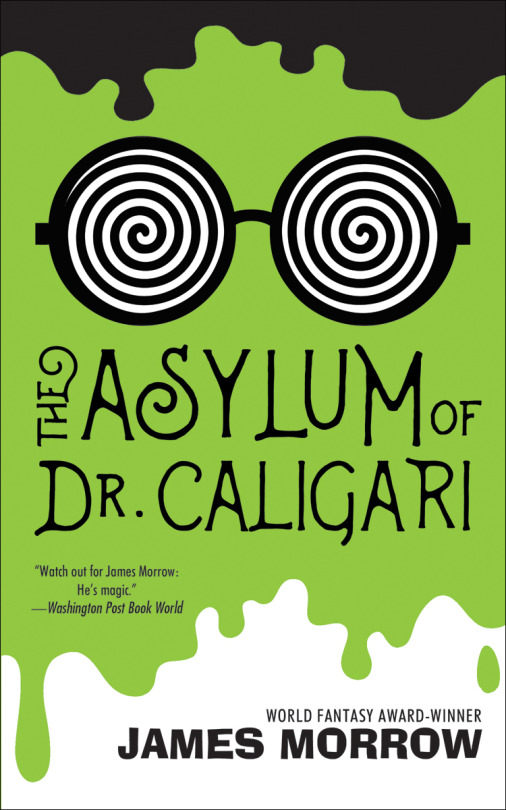James Morrow’s THE ASYLUM OF DR. CALIGARI is an unputdownable read

For STARBURST, Ian White loves James Morrow’s THE ASYLUM OF DR. CALIGARI.
Fans of Robert Wiene’s silent-film classic THE CABINET OF DR. CALIGARI will love this novel. It’s a rich and wonderful mash-up of political satire, psychological fairytale and German Expressionist horror story, with a touch of sci-fi thrown in for good measure. Author James Morrow has created this tale with obvious respect and affection for Wiene’s 1920s masterwork, and he has performed that neat trick of staying absolutely true to the original concept while shooting it off into a direction that makes it entirely his own. There’s a gorgeous edge to Morrow’s writing, a sense of fun and irreverence that never detracts from the dark jeopardy at the heart of the story but which keeps the whole mad adventure chugging along at a rate of knots, and the tension and suspense he manages to build up in the final third of the book is quite extraordinary. Even the last page pulls a sly punch, and leaves you thinking and wondering about the story long after it’s finished. This is the kind of sequel that makes you wish for a time machine, because if Wiene had put Morrow’s novel in front of the cameras the results would have been sensational. An unputdownable read, in all the best senses of that word.

PUBLISHERS WEEKLY enjoys the work.
Entrancing prose enhances the unusual plot of Morrow’s successful melding of history and fantasy. Francis Wyndham, a self-described “bookish farm boy from central Pennsylvania,” had his life changed, in 1913, by an inspirational visit to a modern art exhibition.
<snip>
Readers with a taste for the bizarre and unexpected will be satisfied.

Gary K. Wolfe in the June, 2017 LOCUS praises the book.
There comes a point in a James Morrow story when you turn a corner and realize that, despite his careful grounding in historical detail and his clean narrative line, he’s likely to do anything to drive home his main satirical points. Whether you view
him as a polemical entertainer or an entertaining
polemicist, his stories are governed more by
moral outrage than any sort of conventional plot
logic, so that if he decides to reimagine Godzilla
as an unlikely superweapon of the US Navy or
have aliens planning to wipe out a good part of
humanity because 1950s TV is so bad, we go with
it. Those examples are from two of his novellas
from Tachyon, SHAMBLING TOWARD HIROSHIMA and THE MADONNA AND THE STARSHIP, and the
novella seems particularly well suited for Morrow’s
brand of intellectual lunacy.
<snip>
It covers a lot of territory – including an unexpected twist toward the end that reveals something about the narrator – but, as is always the case with Morrow, he keeps the ride interesting and at times painfully funny.
For more info on THE ASYLUM OF DR. CALIGARI, visit the Tachyon page.
Cover by Elizabeth Story
